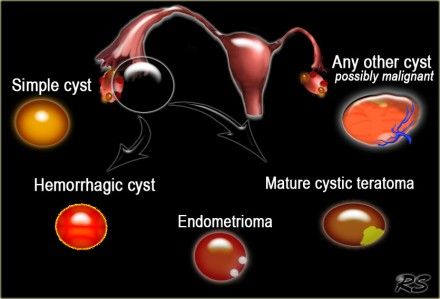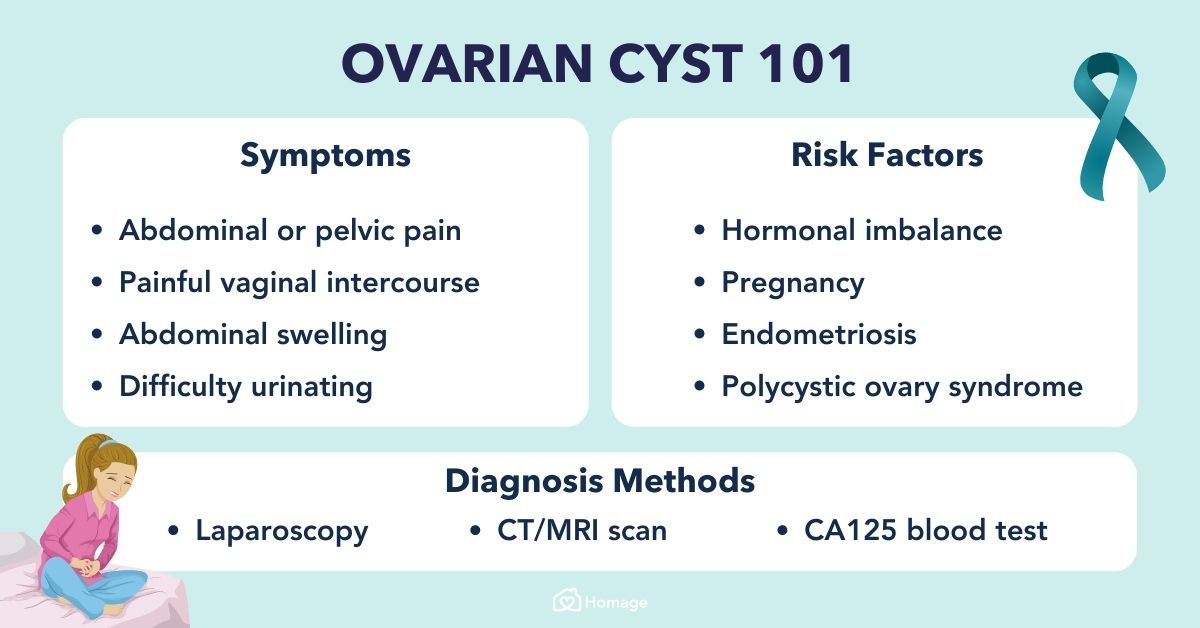
Ovary cyst is a sac filled with fluid or semisolid material in the ovary. It is the sac located in the ovaries, small pelvic organs that make female hormones and contain egg cells. The different types of cysts can be benign or malignant. Functional cysts are those that don’t cause any symptoms and form due to ovulation. These typically shrink after about 60 days. If you notice that your ovaries have more than one cyst, you should consult your doctor.
Several tests are used to diagnose ovarian cysts. OB/GYN doctors and certified nurse midwives can order blood tests to check for low iron levels and symptoms of infection. Urine cultures may be performed to rule out pelvic infections. A CT scan, or CAT scan, is another diagnostic test that may be ordered to look for abnormal growth of the ovaries. These procedures are extremely useful for diagnosing ovarian cysts and determining the best treatment option.
A routine pelvic exam may reveal an ovarian cyst. While ovarian cysts that are filled with fluid are generally not cancerous, those filled with solids may be an indication of cancer. If the cyst is causing a woman to have trouble conceiving, a doctor may recommend a diagnostic procedure known as a laparoscopy. During the procedure, a doctor will insert a small incision and remove the cyst, as well as a small sample of tissue.
If the cyst is large and has spread to other areas of the ovary, the healthcare provider may recommend an open incision called a laparotomy to remove it. A peritoneal smear or a resection of the entire ovary is sometimes necessary. In extreme cases, a patient may also need to undergo other procedures to remove a tumor, including a fallopian tube or the uterus.
The diagnosis of an ovarian cyst requires a medical examination. The health worker will examine the patient, ask about her medical history, and perform a physical examination. A gynecological examination may reveal an ovarian cyst. MRI and ultrasound may be required to clarify the diagnosis. Both tests can help determine the condition and whether it is cancerous. The doctor will also discuss the symptoms and treatment options for the cyst. In many cases, a woman will experience pain and pressure in the pelvis, as well as irregular menstrual periods.

Diagnosis of an ovarian cyst is the only way to know for sure if a cyst is benign. The doctor will perform a pelvic exam to confirm the diagnosis, as well as an ultrasound to determine the size and shape of the cyst. MRI is more accurate than CT and MRI and is more accurate for detecting ovarian cysts. The next step is surgery. The surgeon will remove the cyst and surrounding tissue.
Your doctor will likely do an ultrasound to confirm the diagnosis. An ultrasound will show the location of the cyst. An MRI may also be needed to determine the severity of the cyst. An ovarian cyst that grows in the ovaries is known as an endometrioma. If the cyst is in the uterus, it will lead to pregnancy. But the ovaries will still be attached to the cyst.
Ovarian cysts are very common and can affect any woman. The female body is able to heal itself when it is healthy. If the cyst does not heal properly, it can cause severe pain and pressure in the pelvic area. Ovarian cysts are also associated with a high risk of infection. For this reason, it is very important to get diagnosed as early as possible and get competent advice on the health website https://rajachanger.co.id/. A doctor may treat a cyst by performing a biopsy or undergoing surgery.
Ovarian cysts can be diagnosed by an ob/gyn or certified nurse midwife. Your health care provider will examine you and ask about your medical history. A pelvic exam may reveal a cyst and confirm that it is benign. An ultrasound is a type of x-ray that uses sound waves to determine the size of a cyst. An MRI is also used to see if the cyst is solid.
